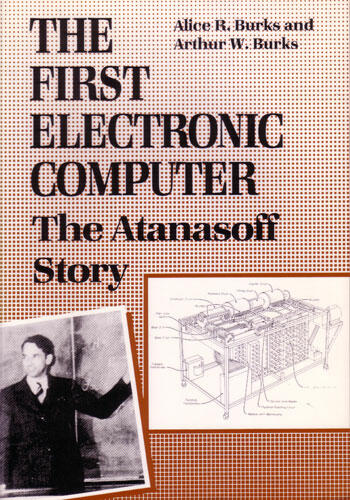Contents
Introduction 1
Chapter 1: A Computer in the Making 5
Biographical Sketch 5
Defining His Task 6
Preliminary Decisions 8
Atanasoff's Elimination Algorithm 10
Original Storage Design 12
Vacuum-Tube Logic 18
The Memory 21
The Arithmetic Unit 23
Electronic Design of the Add-Subtract Mechanism 30
Timing and Control 46
Decimal Input-Output and Base Conversion 48
Intermediate Binary Input-Output 56
Computation Time 64
Chapter 2: Mauchly's Pre-Atanasoff Years 73
The Evidence 73
The Harmonic Analyzer 74
The Cipher Machine 85
The Two-Neon Device 87
Ring Counters 96
Plan for an Electronic Desk Calculator 99
The Situation as of December, 1940 102
Chapter 3: The ENIAC Connection 105
The ENIAC 105
The December, 1940, Meeting 114
The Interim Period 118
The Situation as of Early June, 1941 130
Mauchly's June, 1941, Visit to Iowa 133
The Post-Iowa Period 155
Mauchly's Testimony in an Earlier Suit 168
The Mauchly-Eckert Link 179
An Interpretation 181
Chapter 4: Atanasoff's Day in Court 195
The ENIAC Case 195
Atanasoff on the Stand 209
The Decision on Atanasoff 236
Chapter 5: Atanasoff's Place in History 257
A Technological Revolution 257
Atanasoff's Computer 264
The Causal Chain 271
Appendix A: Logic of Electronic Switching 293
Logic and Electronics 293
Atomic Switches 295
Compound Switches 299
Logical Structure of Adding and Subtracting Circuits 305
Atanasoff's Atomic Switches 311
Structure of Atanasoff's Add-Subtract Mechanism 320
Atanasoff's Place in the History of Computer Switching 326
Appendix B: Response to Kathleen Mauchly 355
Kathleen Mauchly's Advocacy 355
The Pre-Atanasoff Years 362
The Post-Atanasoff Years 371
References 379
Index 383

